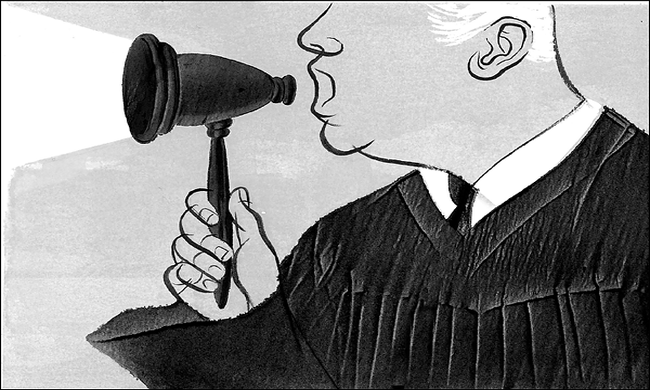This article first appeared in the Great Falls Tribune.
The Montana Supreme Court has a history of striking down constitutional initiatives that restrain government power. Voiding CI-116 (“Marsy’s Law”) is only the latest example. The court treated CI-116 the same way it treated CI-23, CI-27, CI-30, and CI-75.
A 2012 Montana Policy Institute report documented the tribunal’s handling of ballot measures over three decades. Every measure expanding government power survived the Montana Supreme Court. Almost every measure restraining government died in the Montana Supreme Court.
A pattern like this is does not arise by accident. It arises from a system inherently biased and in need of reform.
Plaintiffs generally cannot maintain a lawsuit—much less get a decision—unless they show concrete injury. But in the case of CI-116 and its predecessors, the court demanded no proof of injury. It even let the challengers jump to the head of the line instead of proceeding through the normal trial and appeals process. There was no trial court hearing, no testimony, and no findings of fact.
Such conduct is unlike that of any other judicial panel this side of the Third World. To their credit, Justices Rice and Baker dissented.
In view of this history, it is difficult to take seriously the court’s stated reasons for its decision. But let’s examine them:
First: The justices ruled that the state constitution’s “separate-vote” provision allows them to review an amendment’s content. They misconstrued the provision’s meaning. Its background shows it is a direction to the secretary of state on how to designate voter initiatives and legislative referrals. It has nothing to do with an amendment’s content.
Second: The court decided that separate provisions can render an amendment several amendments rather than one. By that logic, the First Amendment to the U.S. Constitution would be six amendments because it guards six different rights. The Fifth Amendment would be five, and the Fourteenth at least seven.
Of course, the First Amendment is really not six, nor the Fifth Amendment five, nor the Fourteenth seven. In common American usage an “amendment” is any measure the ratifiers adopt as an amendment. How many parts it has is the concern of the ratifiers—not of the judges.
Third: The majority defended strict content review because it assumed deliberation in the initiative process is inferior to deliberation in the legislative process. This assumption is wrong.
Consideration in the legislature is often hurried, logrolling is common, and lawmakers frequently settle for unsatisfactory language in hope of a later cure. By contrast, an initiative is drafted slowly, usually without logrolling. By law, each draft is reviewed by expert state attorneys, often leading to further revision. A lengthy petition process and an election campaign offer months for public discussion. An official pamphlet makes the text and pro- and con- arguments available to every voter.
The deliberation factor argues for less judicial monitoring of initiatives than of bills—not more.
Fourth: The court adopted an Oregon rule even though Oregon’s constitutional language differs from Montana’s. An amendment, the court said, may not make two or more “substantive changes” unless the changes are “closely related.”
The justices were neither able to define “closely related” nor did they take testimony as to which provisions were closely related. This may explain why they ruled that “an accused’s right to bail is not closely related to victims’ rights.” I daresay most people would disagree. A victim has a right to be protected from a second assault by one inadvisably released on bail.
Stunningly, the majority did not even count the number of CI-116’s “substantive changes” correctly. As the dissent observed, the majority repeatedly double-counted single changes by counting language as one change and effect as another.
Under this holding, it is almost impossible for Montanans to amend their own constitution.
Don’t think that even stark simplicity save an amendment. Suppose an initiative states only, “The freedom of the press shall not be abridged.” Under the court’s rule, the new language counts as one change. Its effect on the legislature’s power is a second change. Its effect on the executive power is a third change. Its effect on the Montana University System a fourth change, and so on. The press is not “closely related” to the legislature, the executive, or the university system. Hence, the amendment is void (particularly because it restrains government).
When the court struck down the CI-75 “vote on taxes” amendment in 1999, I pointed out publicly that the court was threatening the constitutional initiative process. Many people criticized me for saying so. But intervening events fully vindicate my position. Montanans MUST reform the state supreme court before they lose whatever democracy they have left.
Finally: The messenger of uncomfortable facts is often attacked with false charges—hence the following disclosures: (1) I was not paid to write this article. (2) I have never voted for or otherwise supported a Marsy’s law. (3) In the only Montana Supreme Court case in which I was a party, our side won. (4) I was the unpaid drafting committee chairman for CI-75, but not a party or attorney in the ensuring case.








